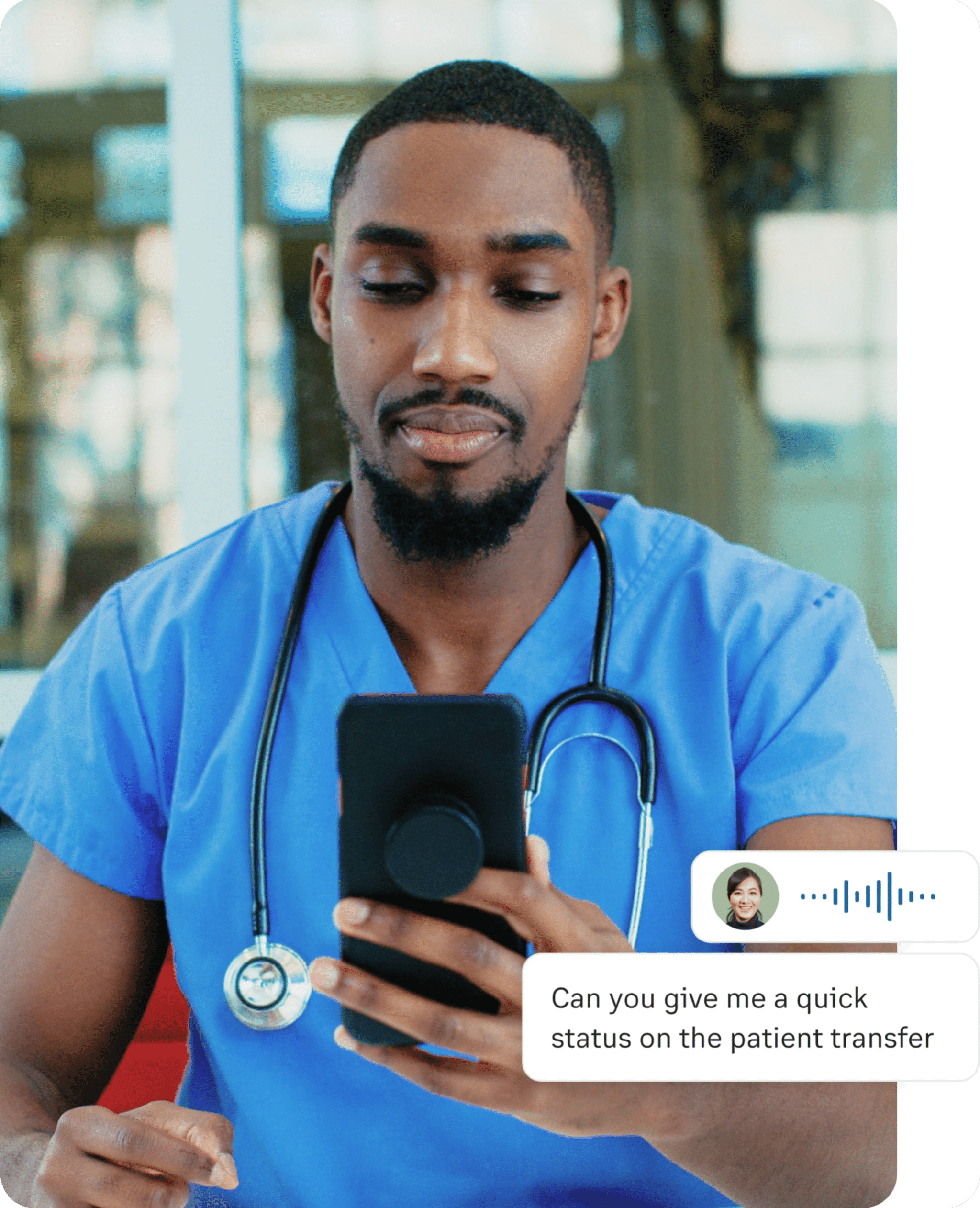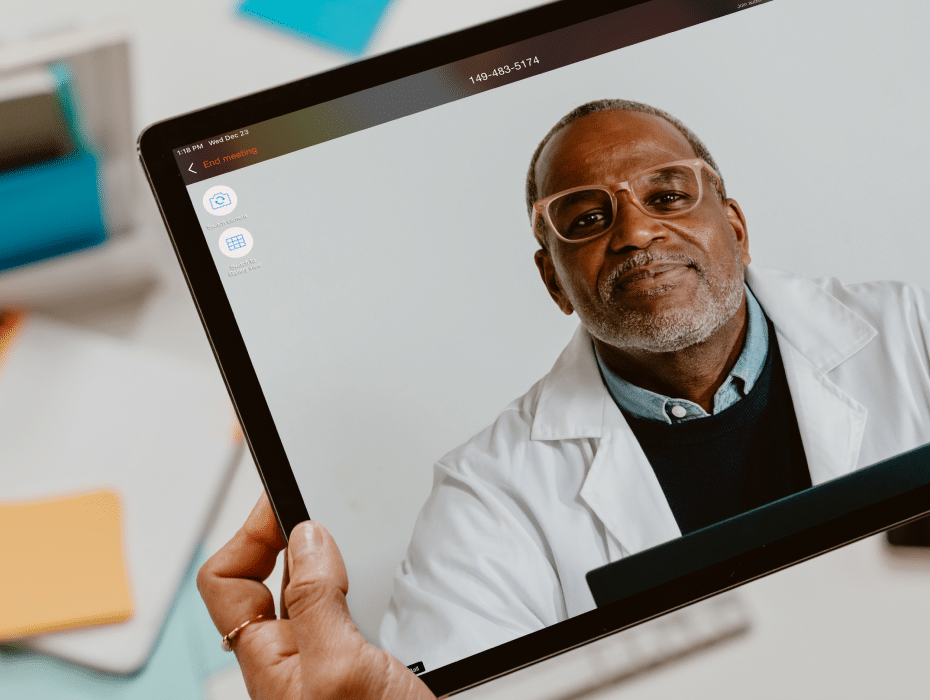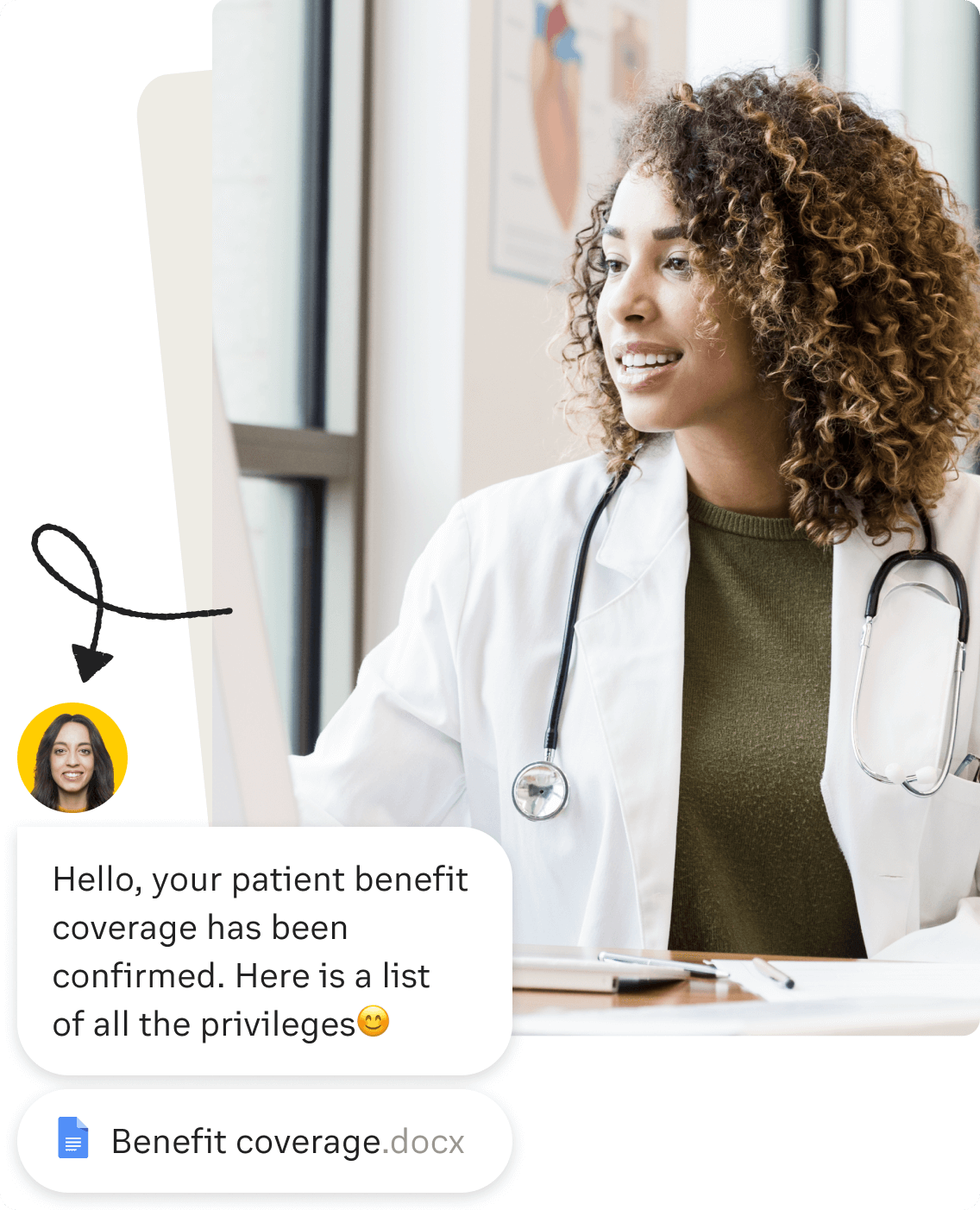You can build a resilient healthcare organization with highly secure, reliable, and composable communications. Three years ago, many healthcare communications platforms were land-locked and unable to support hybrid care delivery (in-office & virtual) or work models— under-serving patients and staff.
Today, cloud communications can connect every phase of healthcare operations and the patient care journey. In recent years, many healthcare organizations stepped up their cloud investments to rapidly scale virtual care access, extend communications across newly acquired sites, and achieve greater patient data security and privacy compliance thresholds.
Now that healthcare providers, including hospitals, have efficiently connected their dispersed teams, increased staff efficiency, and improved patient access — on a single cloud communications platform — what is next?

Healthcare innovations to watch
How will the $4.3 trillion-dollar US healthcare market innovate from here? How can organizations continue to drive value?
Healthcare consumerism and the personalization of healthcare are the megatrends driving industry innovation, and each has technology dependencies and distinct digital transformation outcomes.
Broader self-service options for patients
As patients bring consumer-driven expectations into their healthcare experience, they want to self-direct appointment scheduling, Rx refills, check-ins, or leverage AI-supported access to medical information.
Flexible care access
Telehealth services are now a standard option within the care continuum. The ease of integrating a 20-minute virtual check-in into their busy schedules instead of a half-day commitment is why patients expect their providers to meet them on their terms.
Digital-first patient engagement
Whether reviewing physician ratings on Yelp or engaging a provider within their organization’s Facebook page, patients want to engage digitally. And that includes non-social channels like messaging, web chat, or video.
Robust, point-of-care (POC) collaboration
Now that providers have primarily addressed the longstanding single-device imperative, they are now focused on how mobile-first cloud communications applications can enrich POC team access and care coordination efficiency.
Why RingCentral for Healthcare?
RingCentral helps providers streamline clinicians’ work, simplify how they and their extended teams can access and share information, and improve care coordination.
Our shared objectives are:
- Improved patient outcomes
- Reduced clinical workforce
- Operating overhead through agile mobile-first collaboration experiences
What your healthcare provider peers have to say about RingCentral
Over the last 18 months alone, RingCentral has added nearly 500 new healthcare customers. According to a recent RingCentral report, by using RingCentral solutions, its healthcare customers saw a 46 percent increase in staff productivity, a 53% increase in staff satisfaction, and a 42% increase in HCAHPS patient satisfaction—survey scores.
Hospital systems
Medical West Hospital, Memorial Hospital Gulfport, UHS Hospital System, and Fisher Titus Medical Center are among the hospital systems adopting RingCentral solutions to migrate their existing on-premise legacy systems to the cloud. In addition, these large healthcare enterprises selected RingCentral to address their longstanding requirements for voice interoperability with other critical systems. Choosing RingCentral MVP® (Message Video Phone™) and RingCentral Contact Center™, these hospitals sought the agility cloud solutions provide to integrate clinical communications and collaboration into essential point-of-care delivery workflows and patient engagement touchpoints.
Medical group practices
“We put together an extensive list of must-haves for a company-wide communications solution that would unite our 2,000 employees across 40 distributed locations: reporting and analytics, contact center functionality, cost, mobility, security, and the company’s reputation for support,” said Eric Brosius, vice president of technology services at Sun River Health, New York’s largest federally qualified health center. “When we evaluated all the vendors against these criteria, RingCentral was the optimal solution.” Since using RingCentral, Sun River Health has exceeded its expectations for live-answer patient call rates by increasing them to 97%.
“RingCentral had a lot going for it in terms of functionality and industry reputation,” said the Director of Gonzaba Medical Group’s Patient Access Center, Darryl Flores. “But the big differentiator for us was that RingCentral had earned HITRUST certification. For healthcare organizations, that’s the gold standard because it demonstrates the platform meets the requirements of several data-privacy regulations, most importantly HIPAA.” In addition, RingCentral’s robust security features enabled Gonzaba Medical to open and expand how patients interacted with their patient access center team. As a result, it lowered its patient referral churn rate by 50%.
John Monreal, ENT and Allergy Associates senior director of call center and purchasing operations, describes his company as the nation’s largest ENT, Allergy, and Audiology specialty practice, with over 300 providers in over 55 clinical locations throughout New York and New Jersey. “The practice utilizes RingCentral’s suite of tools to provide a powerful platform for both team collaboration and patient care, said Monreal. “On the patient care side, we use RingCentral Contact Center’s AI tools to monitor for specific keywords and tone to identify any issues and resolve them quickly.” “Using skill-based routing, we shortened our average call duration by over a minute or 30% on every call.” In addition to reducing call duration,” John notes, ‘the skill-specific agent queues helped us create a better experience for callers.”
Dental support organizations
RingCentral is the cloud communications provider of choice at the four largest dental support organizations (DSOs) in the United States, including Heartland Dental, Aspen Dental Management, Pacific Dental Services, and Smile Brands. “The thing that still amazes me every day about RingCentral Contact Center is that it’s enabling our Patient Services Representatives to handle inquiries from patients for more than 1,700 dental offices across the country—and in turn, letting them provide a better level of service than they ever had,” said Jeremy Stroud, vice president of patient services at Heartland Dental, the nation’s largest dental support organization (DSO). “Instead of missing calls and losing opportunities, we used RingCentral’s capabilities to understand call volume trends and maximize answer rates alongside our supported practices.”
Originally published Mar 16, 2023, updated Jun 17, 2024





